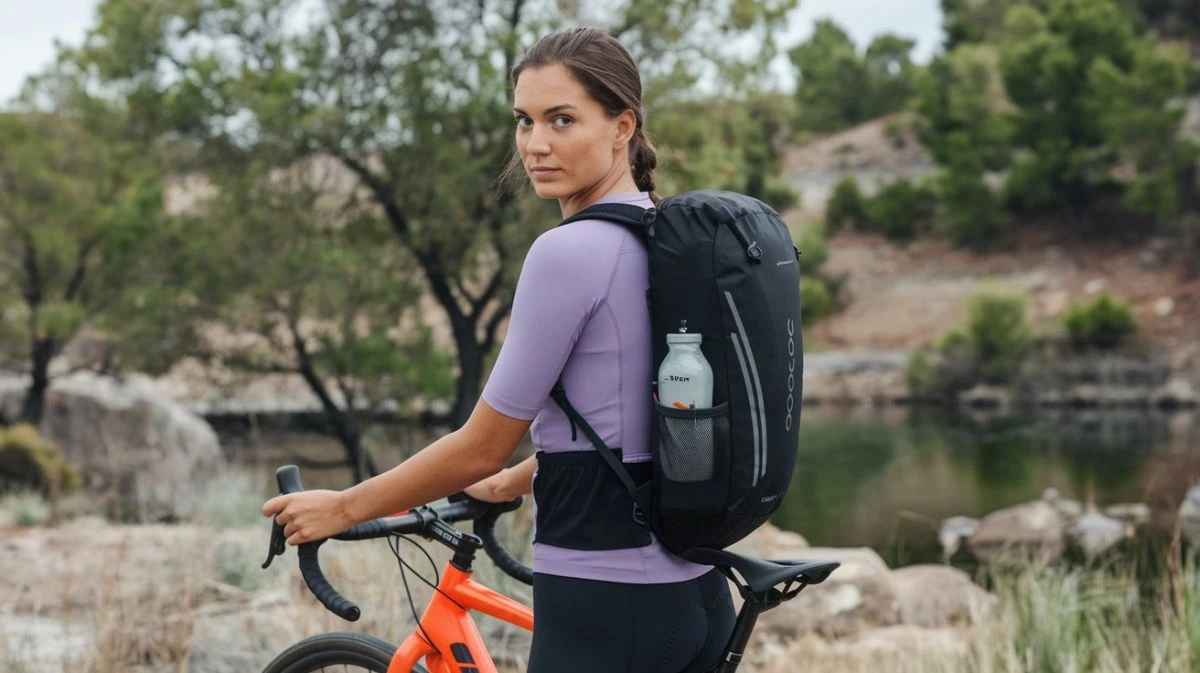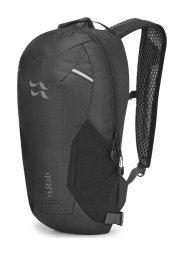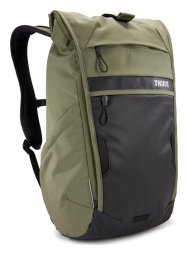Cycling is a great way to spend your free time, improve your physical fitness, and enjoy the beauty of nature. Using the right cycling backpack can significantly enhance your comfort while riding and contribute to your safety, for example, through better stability and special safety features.
We'll look at how to choose a cycling backpack that will meet your needs, whether you're planning a short ride around the city or a long mountain tour. The right backpack will not only make it easier to carry all your important items but will also increase your comfort and sense of security during the ride.
Contents:
- Why You Need a Cycling Backpack
- Types of Cycling Backpacks
- Key Factors in Choosing
- Hydration and Water Reservoir
- Ergonomics and Comfort
- Safety Features
- Materials and Durability
- Size and Capacity
- FAQ (Frequently Asked Questions)
- Conclusion and Recommendations
Why You Need a Cycling Backpack
With a specialised cycling backpack, you'll have all your important gear at hand, and riding your bike will be easier. Compared to regular backpacks, a cycling backpack usually offers better back ventilation, more comfortable straps, and practical pockets for tools, water, and other equipment. Additionally, it's often lighter and more compact, which you'll appreciate, especially on longer rides. Cycling backpacks are designed so that their ergonomic shape supports comfortable carrying and minimises the risk of back injury. Their special construction adapts to the body, responds well to movement without getting in the way, and helps maintain stability.
Cycling backpacks also have a range of practical pockets and compartments that allow you to organise your gear for easy access. This means you always have everything you need at your fingertips – from repair tools to a water bottle and energy bars. Reflective elements and safety straps are another plus, ensuring your visibility to other road users, especially at dusk, in the rain, or in other low-visibility conditions.
Types of Cycling Backpacks
- Backpacks with a hydration bladder: These are ideal for long trips when you need a sufficient supply of fluids. The water reservoir allows you to hydrate without having to stop. Backpacks compatible with a hydration bladder are designed to provide maximum comfort when replenishing fluids - an important aspect, especially on long routes or demanding climbs.
- Mountain biking backpacks: These backpacks are designed to withstand harsh conditions and provide enough space for spare parts and other equipment. Mountain biking backpacks often have a more robust construction and are made from materials that are resistant to abrasion and tearing. They also have special attachment systems for helmets, protectors, and other accessories.
- Urban commuting backpacks: These are compact and stylish, ideal for short trips around the city. They often come equipped with special pockets for a laptop, tablet, and other daily necessities. These backpacks are designed for comfort on shorter journeys, but also with an emphasis on functionality for frequent use.
Key Factors in Choosing
- Purpose of use: Clarify what type of cycling you will use the backpack for. Mountain biking requires a robust backpack, while a smaller, lighter model is sufficient for city riding. Also, consider what other features you'll need – for example, storage for clothes, food, or tools.
- Capacity: Decide how large a backpack you need. For short trips, a smaller volume (10-15 litres) will suffice, while for all-day tours, consider a backpack with a capacity of 20-30 litres. For longer expeditions or multi-day trips, backpacks with a larger capacity, up to 40 litres, might be suitable. Another important factor is whether the backpack offers the option to expand its capacity or attach additional gear using straps and loops.
- Access to contents: It's practical to have quick and easy access to equipment like tools, food, or clothing. Some backpacks have side zippers or other clever systems for quick opening. Pockets on the shoulder straps are also useful for storing smaller items like energy gels or a mobile phone.
Hydration and Water Reservoir
Hydration is key while cycling, which is why many cycling backpacks come equipped with a water reservoir or are compatible with a hydration system. A hydration pack allows you to drink water on the go without having to stop – no unnecessary delays. When choosing a hydration bladder, it's important to focus on the volume (usually 1.5-3 litres) and ease of maintenance.
Tip: To make your hydration bladder last a long time, clean and dry it regularly. We recommend using special cleaning brushes and solutions designed for hydration bladders to help prevent mould and odour. Also, let the bladder dry thoroughly after each use. To make cleaning easier, we recommend choosing bladders with a wide opening for easier access during cleaning and drying.
Ergonomics and Comfort
When choosing a cycling backpack, ergonomics and comfort play a very significant role. For maximum comfort, we recommend properly adjusting all elements of the carrying system. A sports backpack should have:
- Back ventilation: Systems like mesh panels or air channels ensure you don't sweat excessively while riding. Back ventilation is particularly important on longer trips and in warm weather, when there's a risk of overheating.
- Adjustable straps: The shoulder straps, chest strap, and hip belt should be tightened so that the backpack fits well on your back and the weight is evenly distributed. Make sure the straps are not too loose or too tight, and adjust them depending on whether you are riding uphill or on flat terrain. Also, make sure the chest and hip belts sit in the correct places – the chest strap should be at chest level, and the hip belt on your hips.
With a properly adjusted carrying system and a sufficiently breathable back system, an ergonomic cycling backpack will ensure minimal fatigue and motivate you to perform better.
Safety Features
Safety is crucial in cycling, and a functional cycling backpack should offer features that increase your visibility and safety on the road.
- Reflective elements: Reflective strips or logos ensure you are visible on the road even at dusk or in the dark. Reflective elements are particularly important when riding in low-light conditions, where visibility plays a key role in preventing accidents.
- Helmet loops: Helmet loops are a practical accessory that keeps your helmet securely attached to the backpack, even when you're not using it.
- Integrated light mounts: Some backpacks have integrated loops for attaching blinker lights.
- Emergency whistle: A built-in whistle in the chest strap buckle is practical in an emergency when you need to attract attention.
- Bright colours: Backpacks in bright or neon colours increase your visibility on the road, which is particularly important in the city and on busy roads.
- Back protectors: Some backpacks include special inserts or reinforcements that protect the back in case of a fall and increase overall safety.
Don't be afraid to be seen! Equip not just your backpack but yourself with reflective and light elements when you're on your bike.
Materials and Durability
- Water resistance: If you plan to ride in bad weather, it's important to choose a backpack made from water-resistant materials or one with an integrated rain cover.
- Tear resistance: Mountain biking can be tough on gear, so look for backpacks made from durable materials that can withstand impacts and friction. Materials like ripstop nylon or Cordura are excellent choices for their high durability.
- Maintenance and cleaning: Regular maintenance of your backpack extends its lifespan. Choose a backpack that is easy to clean and resistant to dirt.
Size and Capacity
The size of the backpack should correspond to the type of ride you are planning:
- Short trips: A backpack with a volume of 10-15 litres will be sufficient for basic gear like water, a snack, and tools. For short trips, it's important that the backpack is lightweight and doesn't restrict your movement.
- Long tours: For longer trips or mountain biking, consider a backpack with a volume of 20-30 litres. A larger capacity allows you to carry more food, drink, and layers of clothing, which can be useful in changing weather conditions.
- Multi-day trips: If you're planning multi-day trips, you might need a backpack with a capacity of up to 40 litres, which will offer enough space for all necessary equipment, including a tent, sleeping bag, and stove.
FAQ (Frequently Asked Questions)
- What is the best cycling backpack for long trips?
The best backpack for long trips is one that has sufficient capacity (20-30 litres), is compatible with a hydration system, and has an ergonomic back system with comfortable straps.
- Do I need a backpack with a water reservoir?
If you plan longer trips, a water reservoir is very practical as it allows you to drink on the go without stopping.
- How do I properly clean a hydration bladder?
Use a special brush to clean the tube and regularly dry the bladder to prevent mould growth.
- What materials are best for rain resistance?
Water-resistant materials like nylon with a PU coating, or backpacks with an integrated rain cover, are ideal.
- What size backpack is suitable for mountain biking?
For mountain biking, we recommend a backpack with a volume of around 20-25 litres, which can hold all the essentials.
- Is it important to have reflective elements on the backpack?
Yes, reflective elements increase your visibility and thus your safety, especially when riding in low-visibility conditions.
- How do I choose a backpack for urban cycling?
For urban cycling, choose a compact backpack with a volume of around 10-15 litres, ideally with pockets for daily essentials.
- How do I properly adjust the straps on my backpack?
Make sure the shoulder straps fit well, the chest strap is at the correct height, and the hip belt distributes weight onto your hips.
- Can I use a regular hiking backpack instead of a cycling one?
A regular hiking backpack is not ideal as it often lacks the necessary back ventilation and ergonomics for cycling.
- What are the best brands of cycling backpacks?
Among the proven brands offering quality cycling models are, for example, Deuter, Salomon , and Osprey.
Conclusion and Recommendations
When choosing a cycling backpack, it's important to consider the type of cycling you'll be doing, the capacity of the backpack, ergonomics, and safety features.
Summary of Key Points:
- Choose a backpack based on the type of cycling (mountain, urban, long trips).
- Consider the backpack's capacity based on the length and difficulty of the trip.
- Pay attention to ergonomics and adjustable straps for maximum comfort.
- Safety features, such as reflective strips, increase your visibility.
- Prefer durable and water-resistant materials for a longer backpack lifespan.
- Try the backpack on before buying to ensure it fits well and meets your expectations.
The right backpack will provide you with comfort, safety, and enough space for all your equipment. We recommend trying out different models and choosing the one that best suits your needs.
We wish you many miles and endorphins with your new cycling backpack!










